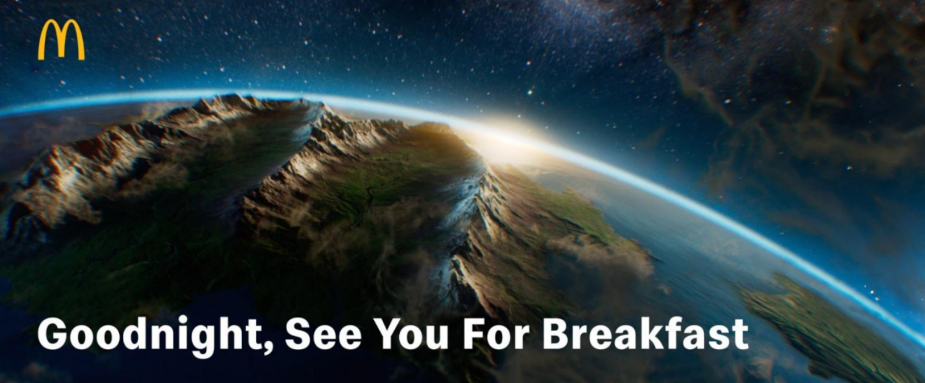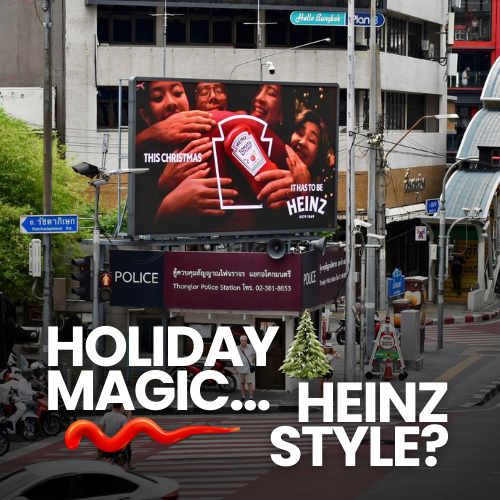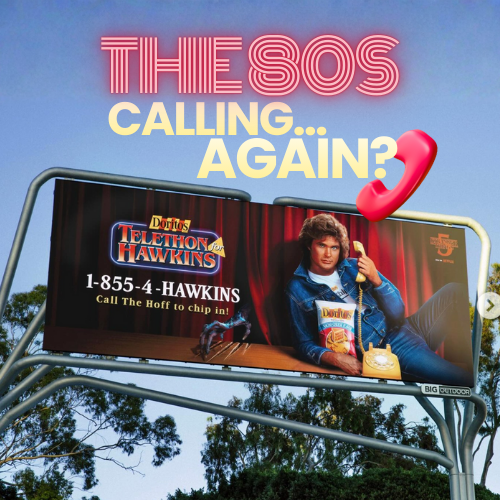In Q3, McDonald’s Taiwan and Ogilvy Taiwan launched a surreal and quietly brilliant idea: a breakfast campaign that starts the night before. Under the line “Goodnight, See You for Breakfast”, they transformed singer Fei Yu-Ching’s classic Goodnight Song into a gentle reminder to sleep earlier, wake up on time, and enjoy the breakfast people actually crave.
The tension is simple: McDonald’s breakfast ends at 10:30 a.m., but many consumers miss it because they stay up late. Instead of repeating the usual morning push, the brand rethought the timing of its communication—using a cultural goodnight ritual to redesign the whole breakfast journey.
A lullaby turned into a breakfast brief
At the heart of the campaign is Goodnight Song, a melody woven into Taiwan’s collective memory since 1979. It has long signaled that “the day is over”: it was the sign-off tune for television stations, the closing music in department stores, and even the military’s lights-out signal. Within Chinese-speaking culture, it carries the weight of a ritual—similar to how Happy Birthday or Mariah Carey’s All I Want for Christmas Is You define moments in the West.
McDonald’s and Ogilvy reintroduced the song—and Fei Yu-Ching’s iconic voice—as a new brand asset. Instead of nostalgia for nostalgia’s sake, they used it to address a real habit in Taiwan: staying up late. “Goodnight, See You for Breakfast” becomes a nightly nudge toward healthier routines and better mornings.

Designing a sleep-to-breakfast ritual, not just an ad
Rather than treating the idea as a one-off film, the team designed a full consumer journey that connects sleep and action. With guidance from sleep experts, the Goodnight Song was reinterpreted in the 60–80 BPM range—rhythms associated with calmer brain states and smoother transitions into sleep.
Visually, Ogilvy built a dreamlike world made of McDonald’s breakfast ingredients: soft forms, gentle motion and a floating, surreal aesthetic. The result is a subtle, multisensory experience that eases people into rest while planting the idea of breakfast before they close their eyes.
Building an early-sleep ritual
Every night at 9 p.m., McDonald’s invites different artists to perform Goodnight Song live on social media. The brand appears exactly when people are doing their last bit of pre-sleep scrolling, turning a passive habit into a soft, recurring brand touchpoint.
Targeted night-time placements on digital and video platforms reinforce the message: “Go to bed early so you can wake up for breakfast.” The lullaby becomes both a cultural signal and a branded sleep cue.

Tapping nightlife and transit through OOH
To reach the people most likely to miss breakfast—night owls—McDonald’s extended the idea into OOH and DOOH. The campaign appears on MRT, bus and taxi screens, in mall displays and convenience stores, ensuring that the message shows up along late-night commutes and hangouts.
Surprise live performances at KTVs and bars brought the lullaby directly into nightlife venues, delivering the reminder where it’s most needed: “Go to bed early so you can wake up for breakfast.” Outdoor media doesn’t just show the product; it helps reframe the rhythm of the night.
Making bedtime a shared online moment
The campaign also invited people to participate through a digital singing challenge. Users were encouraged to record and share their own versions of Goodnight Song, turning a one-way media message into a shared nightly promise to sleep earlier.
Bedtime becomes social, but in a healthier way: instead of endless scrolling, people create and share a collective ritual built around rest and breakfast plans for the next morning.
Turning goodnight intention into breakfast action
The next morning, the journey doesn’t stop at awareness. Consumers can open the McDonald’s app to pre-order breakfast, skip the wait, and redeem exclusive coupons—closing the loop between the goodnight promise and a real, tangible reward.
In other words, the campaign connects behavior across time: from “I’ll sleep earlier tonight” to “I’m actually eating McDonald’s breakfast tomorrow.”
What this campaign says about modern brand building
This is more than a product push; it’s a cultural act aimed at real social habits and healthier lifestyles. McDonald’s and Ogilvy shared a clear vision: great brands move with the rhythm of their times. By turning the end of the day into the beginning of breakfast, they transformed a half-century-old goodnight song into a symbol of better living.
As Giant Kung, chief creative officer of Ogilvy Taiwan, notes, McDonald’s joined the classic trio of account, strategy and creative as a fourth force—a true partner in building the idea. And as Tiffany Chang from McDonald’s Taiwan highlights, it’s a long-term play: creativity used not just to sell one meal, but to build brand affinity through time, consistency and behavior change.
The result is a campaign that doesn’t just sell breakfast. It reimagines how a brand can live between night and morning—and how OOH, digital, culture and routine can work together to inspire new rhythms of everyday life.
FAQs about this campaign
What is McDonald’s Taiwan’s ‘Goodnight, See You for Breakfast’ campaign about?
It’s a breakfast campaign that starts the night before: McDonald’s Taiwan uses Fei Yu-Ching’s iconic Goodnight Song to remind people to go to bed earlier, so they can wake up in time for McDonald’s breakfast.
Why is Fei Yu-Ching’s Goodnight Song so important in this idea?
Since 1979, Goodnight Song has been Taiwan’s unofficial ‘day is over’ soundtrack—played on TV sign-offs, in department stores and the military. McDonald’s reintroduces it as a cultural cue that now also points to breakfast.
How does OOH and DOOH appear in the campaign?
The campaign extends across MRT, bus and taxi screens, mall displays, convenience stores and nightlife venues like KTVs and bars—using OOH/DOOH to reach night owls where they actually stay up late.
How does the campaign turn goodnight intention into breakfast action?
The next morning, people can use the McDonald’s app to pre-order breakfast, skip the line and redeem exclusive coupons—connecting the nightly goodnight promise with a real meal experience.
Bring your idea to breakfast-time OOH
Explore formats that meet audiences in morning routines and commuter corridors.



